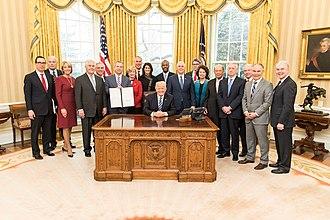In an unexpected move aimed at stabilizing the South American economy, the Trump administration announced a $20 billion bailout package for Argentina, marking one of the largest U.S. financial interventions in the region in recent years. This landmark decision comes amid Argentina’s escalating economic crisis, characterized by soaring inflation and a depreciating currency. As details unfold, this article explores the key aspects of the bailout, its potential impact on Argentina’s economic recovery, and the geopolitical implications for U.S.-Latin America relations.
Trump Administration Unveils Controversial 20 Billion Dollar Bailout for Argentina
The Trump administration has announced a massive $20 billion bailout package aimed at stabilizing Argentina’s struggling economy amid rising inflation and debt concerns. This unprecedented move intends to bolster Argentina’s international reserves and restore investor confidence without imposing immediate austerity measures. Key components of the aid include direct financial support, debt restructuring assistance, and economic reform incentives designed to support sustainable growth. However, critics argue that the bailout favors U.S. geopolitical interests and may deepen Argentina’s dependence on foreign aid.
Details of the package reveal a multi-layered approach addressing short-term liquidity challenges and long-term fiscal health. The administration emphasized conditional cooperation on reforms targeting tax policy, government spending, and transparency measures. Below is a breakdown of the main features:
- Initial funding: $10 billion as immediate aid, contingent on reform benchmarks
- Debt management: Facilitation of renegotiated terms with international creditors
- Technical support: Deployment of U.S. economic advisors and policy experts
- Monitoring framework: Joint oversight committee to track progress and compliance
| Aspect | Details |
|---|---|
| Duration | 3 years |
| Interest Rate | Below market average |
| Primary Goal | Economic stabilization |
| Main Risk | Increased debt dependency |
Economic Impact and Strategic Goals Behind the US Financial Support
The $20 billion financial aid package extended by the Trump administration was not merely a humanitarian effort but a carefully calibrated move to stabilize a key ally’s faltering economy. By injecting this capital, the U.S. government aimed to curb the risk of wider financial instability in the Latin American region, which could have cascading effects on global markets. The bailout was designed to restore confidence among international investors and shore up Argentina’s foreign reserves, thereby reducing the nation’s reliance on more volatile capital inflows. Crucially, this intervention aligns with broader U.S. goals to counterbalance increasing economic influence from China and Russia in Argentina and neighboring countries.
Strategically, the bailout comes with stringent conditions intended to promote fiscal discipline and sustainable growth. The administration underscored commitments to reforming Argentina’s tax system, strengthening anti-corruption measures, and implementing market-friendly policies to boost exports and employment. These requirements reflect Washington’s intent to foster a more open and resilient economic framework in Argentina, which serves U.S. geopolitical interests. Key areas targeted include:
- Currency stabilization: Preventing further peso devaluation.
- Debt restructuring: Negotiating terms with private creditors.
- Trade enhancement: Encouraging bilateral trade agreements.
| Objective | Expected Outcome | Timeline |
|---|---|---|
| Fiscal Reform | Reduced budget deficit | 12 months |
| Monetary Stability | Lower inflation rates | 6-9 months |
| Investment Promotion | Increased foreign direct investment | 18 months |
Experts Weigh In on Risks and Recommendations for Effective Aid Implementation
Leading economists and international aid specialists emphasize that while the Trump administration’s $20 billion bailout aims to stabilize Argentina’s faltering economy, the complexity of implementation poses significant risks. Key concerns revolve around conditionalities tied to fiscal austerity, which may deepen social inequality if not managed carefully. Experts urge that coordination with local stakeholders is vital to ensure funds translate into sustainable economic reforms rather than short-term fixes. Transparency in fund allocation and vigilant oversight mechanisms are also highlighted as crucial factors to prevent mismanagement and corruption.
Among the recommended strategies for maximizing impact, experts suggest:
- Phased disbursement aligned with measurable economic benchmarks
- Robust monitoring frameworks involving independent auditing bodies
- Inclusive policy design incorporating voices of civil society and labor unions
- Emphasis on social safety nets to protect vulnerable populations during adjustment periods
| Risk | Recommendation |
|---|---|
| Inflation spikes | Gradual monetary tightening |
| Capital flight | Strengthened financial regulations |
| Public unrest | Expanded social assistance programs |
| Corruption risks | Independent oversight councils |
In Conclusion
As Argentina navigates the economic challenges ahead, the Trump administration’s $20 billion bailout marks a significant moment in U.S.-Argentina relations and international financial support. While the immediate impact of the funds aims to stabilize Argentina’s economy, experts caution that long-term recovery will depend on continued fiscal reforms and governance measures. As this unfolding story develops, stakeholders on both sides will closely monitor the effectiveness of the bailout and its implications for the region’s economic landscape.




